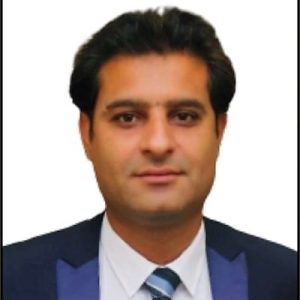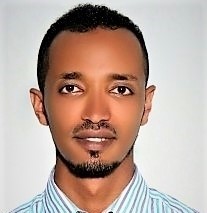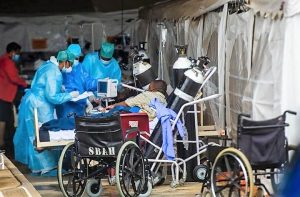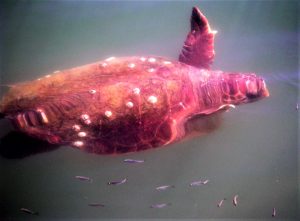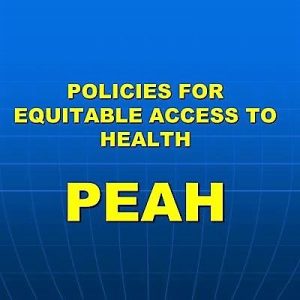This reflection piece calls for a debate to discuss whether the present trend of “business-based” partnerships (from former solidarity based cooperation) is pertinent with the evolving global challenges and coherent with the ethical principles inherent to the human and environmental global agreements related to global wellbeing in sustainable (CO2 emissions below 1,8 mT per person and year –ppy-) equity (international and subnational inequality GINI [i] < 0,2). It concludes that in order to progress to lower global inequities and achieve a carbon neutral world by the mid of the century and so prevent a climate disaster for the next generation, a greater focus is required on rural vs local, collaboration vs. competition, justice vs. market access to right-based universal social services and a shift from military spending to exhaust all peace agreements and fund a meaningful collaboration according to capacities and needs

By Juan Garay
Professor of Global Health Equity in Chiapas, Mexico, ELAN and UCLV, Cuba and National School of Health, Spain
A Renewed International Cooperation/Partnership Framework in the XXIst Century
Development co-operation (let us define it as a relation of mutual benefit) has been the Cinderella of international relations, and it seems now to be “lost in translation”
Historically, interactions between larger groups, tribes or countries, translated in benefiting those with greater power by poaching minerals, crops and/or slaves. It often came with taking over the governance through colonization in different shapes and in the name of “civilization” or “conversion”. Europe was most often in that power side throughout history.
Other relations aimed at counter-balancing those power relations and focus on the benefit those in the “losing side”. Those intentions were often related to religious groups and came with other interests, as evangelization, and a “vertical” approach (from those knowing better or having more than those in the receiving end) under different shapes of “charity”.
After the world wars in the XXth century, the cry for peace led to the foundation of the United Nations and the adoption of the Universal Declaration of Human Rights. Such new spirit, together with the impact of the war in the colonial powers, led to the wave of independence of most of the African, Caribbean and Pacific countries, while the European Union (EU) was born. Soon after, the former EU colonial and colonized countries gathered in the Youndee, Lome, Cotonou Agreement. As the Breton Woods institutions progressed with the post war reconstruction of Europe, they started to offer finance to lower income countries in return for opening up their economies to investments of former metropolia and introduce “adjustment programmes” which often meant lower government spending (especially for public services), a move called by some as neo-colonization.
Development cooperation bid to respect national priorities and governance, which led in 2000, in parallel to the Millennium Development Goals (MDGs), to the Paris principles on Aid Effectiveness (meant to respect country’s priorities and sovereign processes). Ten years later, and aware and alarmed by the threat of global warming and the responsibility of the “developed” countries, the world agreed in Busan 2011 on a more horizontal approach where all countries shared challenges and all could learn from each other. In Addis Ababa 2015, as total Overseas Development Assistance (ODA) was less than 0,2% of the world’s Gross Domestic Product /GDP- (0,4% in the EU), the global consensus on financing for development called to increase aid and domestic revenues, remittances and foreign investment towards sustainable development.
Limited ODA, appropriation and weak links with additional financing for development undermined compliance with the MDG targets which were swiftly replaced by the Sustainable Development Goals (SDG) 2030 agenda relevant to all countries and called on enhanced global collaboration beyond former vertical north-south dynamics.
Soon after, in 2020, just after Brexit, the Covid pandemic hit the world and greed to hoard vaccines ruled over solidarity. When the pandemic seemed to vanish, Russia’s invasion of Ukraine further confronted the countries with greater military power (members of the United Nations’ Security Council) and the world increased spending in arms and in burning coal. The EU embraced more clearly than ever security under United States of America (USA)-led North Atlantic Treaty Organization, sided -without the cracks of the Iraq war- with the USA and confronted Russia’s military invasion and China’s leading world trade. So it was that the EU remained allied with the biggest army while confronting as enemies its main energy (Russia) and manufactured import sources (China).
The EU’s (claimed) leading roles on peace, human rights, equity and ecology were blurred by providing arms, rejecting refugees, eroding its social model, burning coal and dismissing the imports’ factor in carbon emissions.
The world’s leading economies gradually shifted the focus of international cooperation to Foreign Direct Investment, eight-times higher than annual ODA, some 1,6% of the world’s GDP, which, if adjusted to SDG needs, could meet the estimated SDG gap in ten years.
In reaction to China’s 2013 Belt and Road Initiative (BRI) one-trillion initiative signed with 151 countries, the USA launched with G7 in 2021 the B3W (build back better world) as a “values-driven, high-standard, and transparent infrastructure partnership led by major democracies” aimed to narrow the $40 trillion (Tn) world estimated (by McKinsey) investment gap (60% by emerging economies) infrastructure ( power, roads, telecom, water, rail, airports, ports) required by 2035[ii]. As part of it and claiming its own leading role as still the world’s main investing, trading and ODA partner in the world, the EU launched its Global Gateway (GG) aimed to mobilize €300 billion (Bn) in investments focused on quality and transparent connectivity as the way of “showing political presence and ambition”[iii]. However, the financial muscle of EU’s GG is a third of China’s BRI and 0,7% of the G7 B3W gap.
Besides the limited funds in relation to the estimated gap, the EU’s GG is uncertain as it is engineered to attract or direct EU investments towards development, a call that has frequently fallen short to expectations in the last decades. Besides, offering public subsidies, often to profitable multinationals (and dropping past principles as untied aid) may echo the recent public uproar at governments rescuing banks after the 2008 crisis.
While China, the US and the EU and other G7 members add up 70% of the world’s GDP what is their legitimacy to promote “Sustainable Equity”?
In terms of sustainability, the EU’s carbon footprint per capita is 6 metric Tonnes (mT), four times above the ethical threshold (above which we’re bound to catastrophic global warming) compared to 7.6 of China and 14.6 of the USA. They together mean 80% green-house emissions, close to 90% if carbon emissions of imports were factored in. Their production-trade-consumption pattern are unsustainable. Despite many waves of global strategies as the MDG and SDG agendas and the recurrent G7 and Chinese initiatives in the name of development inequities have widened and CO2 emissions have increased or remained far from the ethical threshold mentioned above. The world’s growing inequity means 16 million excess (from feasible levels for all) deaths per year[iv] (one in four of all deaths) and the progress towards the 1.5° warming (“point of no return”[v]) predicted over 200 million excess deaths in the remains of the century[vi], the worst-ever intergenerational legacy in human history.
With such a record of low legitimacy in terms of their own carbon emissions, it is unclear how China, the USA and the EU will bring about the change the world needs towards sustainable equity. As per the EU’s GG, it is unclear its added value on digital connectivity (most chips are produced in Taiwan and the majority of communication satellites are from the US), clean transport (green hydrogen will still be a high-cost fuel and e China controls most key minerals for energy storage) or renewable energy sources (with China’s lead in solar panels scale production and decreasing prices).
Is the present EU cooperation framework, under the GG investment lead, coherent with the challenge of a carbon neutral EU and the strength of promoting its social model?
Many studies question how FDI to developing countries may make them more reliant on the depletion of natural resources to keep their economies running[vii]. The link between ODA subsidizing private FDI and the impact on wellbeing in sustainable equity in lower income countries, embeds the following uncertainties: 1) will the level of ODA, still a very low share of global GDP and FDI, attract higher flows to low-income countries? 2) If so, will that flow be clearly linked to sustainable equity, often meaning lower profits (equities, the “s” meaning often the opposite)? 3) If flows increase and increase sustainable equity, will they increase countries’ debts and dependency? And, 4) if FDI, as often aims, boosts EU trade,
will it increase our already unsustainable and harmful ecological and carbon footprint and undermine the wellbeing of coming generations?
So, is it the right direction for the EU to bet, with unclear global lead, on connectivity, under the shadow of the US-led B3W, through the uncertain and questionable leverage on the private sector and aimed at gaining political ambition?
What is the primary responsibility of the EU in the context of global challenges?
The EU has reduced (21% lower) more than any other region of the world its carbon emissions since 1990. However, it needs to further reduce them by three fourths (and other green-house emissions and ecological footprint) by changing its production-trade-consumption patterns, a sine-qua-non which is, more often than not, ignored. Its contribution to excess mortality through excess emissions may be 15% of the global projected burden of mortality due to climate change during the XXIst, that is, over 30 million deaths.
In contrast, the EU’s positive impact in the world is uncertain through 65 years of EU ODA and through the questionable link of innovation improving global wellbeing given the evidence of market failures of the potential public goods as Covid vaccines have recently shown.
So, the first challenge of the EU to be good for the rest of Humanity, as the “primum non nocere” (first, do no harm) medical oath states, is to reduce carbon emissions including through imports.
The EU commitment to a carbon neutral economy by 2050 meets the ethical challenge but it may come too late and insufficient especially if such commitment does not include the carbon emissions attributed to others, mainly China, whose exports are consumed in the EU. A reduction by three-fourths of the EU emissions means less production, less trade (as with China) and less consumption. The innovation, technology and scale of investments required to shift completely to energy based on renewable energies and fuels (as green hydrogen), will not come in time to meet the ethical goal without changing, urgently, our unsustainable lifestyles.
Which is then the main singularity of the EU to contribute to a better world in sustainable equity based on universal rights and as the solid base for global peace and prosperity?
While the EU reduces the harm imposed on others through excess carbon emissions, mainly the less polluting tropical countries, the EU should preserve at home and promote globally its social model regulating the market towards equity by a strong social contract between institutions -duty bearers- and citizens -right holders- enabling fiscal space and universal right-based social services as health, education, justice and social protection of those in greater need.
The EU’s main difference with China and the USA is its rights-based social model, with the most advanced and equitable regulation and taxation (with a tax-to-GDP revenue rate of 41% compared to 26% in the USA and 12% in China) of the market so as to reduce inequalities (EU’s GINI stands at 0.3 vs China’s and USA around 0.4) and provide universal social protection. The EU social model translates in the highest regional average life expectancy (80 years vs. 78 in China and 77 in the USA). The other main global lead in equitable wellbeing is Japan, with GINI of 0,32 (yet with a tax revenue rate of only 13% of GDP) and world’s highest life expectancy at 84 years. Equity dynamics call for a GINI <0,2 which may limit inequalities to a fair distribution between dignity and excess thresholds[viii].
A global strategy to effectively progress towards human wellbeing in sustainable equity
If ODA did not reach the necessary scale and impact, and private FDI has many uncertainties to translate in global sustainable equity, where could the EU and global cooperation head to?
One approach to be considered, on which we have based upcoming EU cooperation in Cuba is to focus at the local rural level. This is based on two main reasons: on the one side, ecologically basic needs need to be met with local means if we really commit to a carbon neutral world by 2050 and escape the 1,5° point of no return. On the other side, it is by recovering local and rural dimensions, blurred by national and global dynamics, how we can increase empathy with the communities we live with and the nature which supports our lives.
Hence, local sustainable development should aim at sovereignty (self-sufficient based on local means and capacities) of basic living needs, that is, food through sustainable agriculture, clean energy through renewable sources, both linked to sustainable water supply and circular economy and collaborative innovation (including 3D manufacturing) of housing and basic “wellbeing technology”.
The regional level links local communities under a shared geographic, cultural or national or sub-national administration, where cooperation may promote fiscal and territorial cohesion strategies aimed at socioeconomic equity and universal coverage of rights-based services of education, health, justice and social protection, where the EU has a strong record and potential lead.
Cooperation should also aim at promoting global collaboration towards public goods, shifting from the present focus on global competitiveness for market-driven inequitable access to raw materials, manufactures and services, including global public goods as recently revealed with the Covid pandemic.
The above mentioned approach requires sharing information online (as travels for work, and less for tourism are most often non-essential and unsustainable in terms of carbon emissions) and contributing with means meant to reach every person as a public good, according to added values in each country and region of the world.
The main local basic needs include basic food, energy, water, housing, key appliances, local transport and access to internet needs -FEWHATI- . They require global investments in solar panels (1kw pc costing in China 220$/kw), basic agroecology technology at some 2000$/Ha (feeding 10p), basic water supply and sanitation networks (solar pumps for 1500$/kw pumping from 150 feet depth and serving 100 person needs), basic comfort appliances (clima, fridge, kitchen appliances, screen) at some 800$/4p, shared electric light vehicle (1000$/4p) –yet with the challenge of short-lived batteries- and access to internet (smart phone and modem 400$/4p), all around $1000/p, with circular economy dynamics linked to building materials and decent housing. Some 3Bn people in the world lack those basic sustainable needs, which means, besides the workforce, transport and some machinery as drilling and trillion-3Tn investment for the next decade. That may seem close to the 3,3 Tn annual investment estimates by McKinsey[ix] for G7[x] which led to the B3W gap estimate by 2035. But while the basic local needs’ investment aims al sustainable wellbeing, the McKinsey and G7 B3W is based on keeping up the present destructive model of growth, transport and trade (including estimates to upscale airports and roads’ capacities in high income countries…).
The mentioned 3Tn basic needs funds are 3,3% of global GDP, close to the world’s military spending and some 10% of the redundant GDP n high income countries[xi]. It could help prevent 16 million annual deaths and reduce some 3-5 Bn CO2 ton emissions per year.
Collaboration between education and research centres should promote open software, and additive manufacture capacities so as to promote local knowledge sovereignty, repairs, adjustments and progressive local design and production.
If ODA meets the (though arbitrary[xii]) 0.7% in high income countries, the cost of such basic local needs for almost half the planet would mean 10 years of global ODA void of unnecessary flights, hotels and experts’ fees now accounting to 40-50% of ODA. Such minimal economic redistribution, 20 times lower than the equitable tax rate of the top 10% in the EU, could be uploaded by financial markets so as to reduce carbon emissions and prevent excess mortality due to global inequity.
Such 3Tn gap aims at the basic needs which in Maslow’s scheme[xiii] is the base but should be complemented by protection (health and justice services), opportunities and sense of belonging (education and culture). While fiscal equiy and territorial cohesion should fund such human rights-based social services, the global competition for what-should-be global public goods (eg. essential vaccines and medicines) and for basic-services’ civil servants’ salaries (as health, education and justice professionals), means that the inequity (unfair distribution) of global salaries fuels brain drain and undermines access to those essential protection and belonging needs. The estimates of the basic salaries that would prevent such migration flows are in the range of another 1000 per person and year ppy which could be provided by a sort “universal social protection fund” to operationalize the International Covenant on economic, social and cultural rights. That would be part of the empirical evidence of minimum $4000 ppy CV –dignity threshold[xiv]– (in contrast with insufficient world bank set poverty thresholds) below which no country in 60 years has been able to achieve the best feasible and sustainable levels of wellbeing (by proxy of life expectancy). Such reality calls, after the local needs’ investment, for a gradual shift of the ODA present insufficient (from 0.7%) and vertical (from “aid”) flows to required levels (some 7% of global GDP towards equity of < 0,2 GINI cross and sub-national) and framework (international fund, as with the national social insurance schemes), if the world truly commits to universal rights as it did, though in a non/committal way- 74 years ago.
The above described approach guides global dynamics to rural vs. urban, local sovereignty vs. global trade, universal vs market driven right-based social services, global collaboration vs. competition to advance on global public goods and a renewed cooperation framework based on fair redistribution of global resources rather than profit oriented investments, as the current trend (China’s B&R, US B3W and EU’s GGI) reflects.
Such global collaboration should strengthen multilateralism, a renewed global and binding commitment to the Universal declaration of Human Rights and question international oligarchic structures as the Security Council, the G7, G20 and other restrictive groups, through a truly democratic UN governance promoting the mentioned strategy towards sustainable equity.
The EU’s main added value is to champion equitable wellbeing, siding with Japan as global leads, collaborate with China’s lead in solar cells and other key global goods while reducing import high carbon dependency, with Taiwan’s semiconductors, with the USA’s innovative capacities, promote tireless peace talks with Russia and promote, with like-minded regions especially in the global South, a new deal based on universal right based framework and services towards sustainable equity led by a democratic renewed UN system.
There is an urgent need to change direction and avoid climatic tragedy and transform the present global lack of trust in institutions driven by market forces rather than by active participation and ethical principles on sustainable equity. In EU and the USA public trust across generations has declined from over 70% in the 60s to less than 30% presently. Such trend is similar to wider surveys in both “developed” and “developing” countries[xv]. A new global deal should promote collaborating to global justice through hope, rather than competing for power or privileges through fear.
This debate needs to reach schools and universities, workers and scholars, mass media and social networks and local, national and global politics. The future of our children is at stake as never before and Humanity needs courage and wisdom to change the present state of unethical inequities and direction towards apocalyptic disaster.
Endnotes
[i] The Gini index measures the extent to which the distribution of income or consumption among individuals or households within an economy deviates from a perfectly equal distribution.
[ii] https://www.mckinsey.com/capabilities/operations/our-insights/bridging-global-infrastructure-gaps
[iii] https://www.euractiv.com/section/global-europe/interview/eu-must-offer-alternative-to-russia-and-china-borrell-says/
[iv] https://doi.org/10.1093/acrefore/9780190632366.013.62
[v] https://www.ipcc.ch/sr15/chapter/spm/
[vi] http://www.peah.it/2018/07/5498/
[vii] https://environment-review.yale.edu/foreign-direct-investment-developing-countries-blessing-or-curse
[viii] http://www.peah.it/2021/04/9658/
[ix] McKinsey & Company is a global management consulting firm that serves leading businesses (e.g., Fortune 1,000 companies like Coca-Cola and Microsoft), investors (e.g., Private Equity firms like KKR), governments (e.g., US Dept. of Energy) and nonprofits (e.g., Bill and Melinda Gates Foundation).
[x] https://infrastructure.aecom.com/infrastructure-funding
[xi] http://www.peah.it/2021/04/9658/
[xii] https://www.oecd.org/dac/financing-sustainable-development/development-finance-standards/the07odagnitarget-ahistory.htm
[xiii] https://www.simplypsychology.org/maslow.html
[xiv] http://www.peah.it/2021/04/9658/
[xv] https://www.un.org/development/desa/dspd/2021/07/trust-public-institutions/



